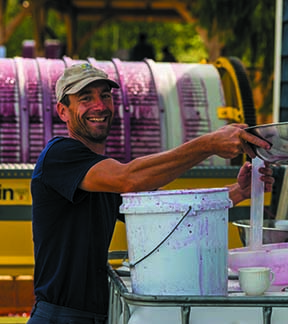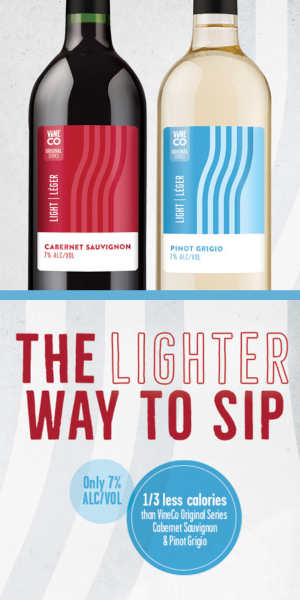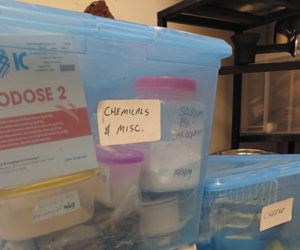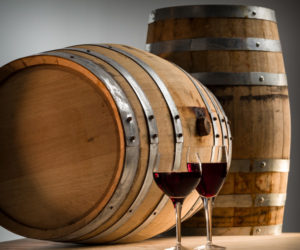A grape’s tannin structure is impacted by varietal, terroir, and growing conditions. Sometimes, grapes lack the tannins desired, and when that happens winemakers have the option of techniques to maximize extraction, adding tannins, blending, and more. Three pros share their approach in this issue’s “Tips from the Pros.”
Phil Plummer, Winemaker at Montezuma Winery in Seneca Falls, New York

I use exogenous fermentation tannins on almost all of our red wines, vinifera whites, and even some hybrid whites. For red wines, I add fermentation tannins as soon as I crush the grapes. For whites, I generally wait until after the fermentation has started. The purpose of fermentation tannin for red wine is almost purely sacrificial: Adding them at crush helps to scavenge away proteins that would otherwise bind and remove the natural tannins and anthocyanin that are present in the grapes. By removing proteins at crush we’re making the job of co-pigmentation more efficient and effective. For white wines, fermentation tannins do a really good job of refining structure, preventing hazes, and assisting in the release and stabilization of aromatic compounds.
There are some decent cellaring and finishing tannins on the market that do a good job of making slight corrections to wines that are closer to bottling, but I feel like those are far easier to detect and identify as exogenous in the finished product. I’ll use them if I have to, but it’s definitely a last resort.
There are lots of strategies that you can employ to maximize tannin extraction, but I think it really boils down to tweaks on a few parameters: Crush level, contact time, cap management, and press protocol. The degree to which you crush your fruit has a direct impact on the extractability of the tannins present in the skins — if you’re looking for more extraction, skip the whole-berry fermentation. Leaving your red wine on skins for longer and diligently punching down the cap are two more simple methods for improving tannin extraction. We tend to leave red wines on skins for 14 days or so, but we’ll leave them for even longer if we’re looking to push a bigger, bolder style. Our default cap management strategy is to give every red fermentation at least two daily punchdowns, but I try to make sure we give them an additional pump-over on a daily basis to introduce a little bit of oxygen and encourage the tannins to polymerize in a way that will make them more stable in the long term. Finally, the amount of pressure applied when pressing off of skins will affect the tannin content of the finished product — higher pressure generally means higher tannin content. Even if you’re looking to separate press fractions, holding on to that heavily pressed wine will give you a great tool to blend into wines that lack structure and volume.
An obvious way to boost tannin is using oak in aging. French oak in particular does an excellent job of contributing tannins and shaping existing tannic structure in an elegant way.
Another option is to blend with a high-tannin wine. The first grape that comes to mind from my own experience is Cabernet Sauvignon, but there are a host of grape varieties worth considering. Some of those would include Tannat, Tempranillo, and Lagrein.
Embracing the grapes you have is another point worth talking about, especially in cool climates. Mother Nature doesn’t always give us the weather we need when it comes to phenolic ripeness and concentration. As a result, winemakers around here embrace fresher, juicier styles of red wines than you might find in warmer climates. That’s not to say that there aren’t years where we can make big, structured reds, but our hallmark style tends to be acid-driven and fruit-focused, with sparing and deliberate use of oak.
Stéphane Lamarre, Owner/Winemaker at Château de Cartes in Dunham, Quebec

ost of our red hybrids lack tannins and have too much color so the addition of tannins is mandatory for us. We use different types of tannins during all stages of winemaking. For example: In fermentation we use VR Supra and VR Color. They are very handy to protect the natural tannins and to fixing the color. Then after pressing we would consider the addition of quebracho tannins to adjust the level of tannins and build structure, depending on the style needed. And finally, for those that will benefit from barrel aging, finishing tannins will be used. We barrel age using about 1⁄3 new barrels.
When it comes to white wines, we do add gallnut tannins during crushing. This addition helps a lot in protecting the must from oxidation and reduces the amount of sulfites needed to protect the wine.
You have to be careful trying to extract more tannins than what the grape skins and pulp want to give you. When you try manipulating the grapes too much to get their tannins, most of what you will get are seed tannins and herbaceous notes. We never push the extraction too much. A good trick is to elevate the skin-to-juice ratio by adding our white skins to the reds. We have found Vidal Blanc skins to be very handy in adding tannins to red wines. One should know that this can increase methanol production and great care should be taken if this technique is used in conjunction with extracting enzymes.
It is important to keep in mind that tannin additions are good for adjustments — not for making a wine that the grapes can’t give. In some years when the grapes simply do not develop the tannins close to what is required for red table wines we just don’t make reds. We believe that a good rosé will sell better than an ordinary red.
When the year is very good, we do a saignée out of our red tanks to improve the quality. The juice that is bled off at the start of fermentation will be made into rosé wine, and then we have a higher skin-to-juice ratio to maximize tannins.
For home winemakers working with similar, low-tannin grapes, I would recommend sticking to oak chips and tannins in fermentation. The usage of barrels is not easy and great care must be taken to avoid spoilage. It is so easy to ruin a good wine in a dirty barrel.
Lynita May Docken, Co-founder and Winemaker of Elmaro Vineyard in Trempealeau, Wisconsin

As growers of some hybrid varieties we are familiar with grapes that lack the tannin structure we would prefer. For instance, Marquette is always a problem when it comes to tannins. We do work with some Frontenac, however we know it’s very low in tannins so we don’t ask that grape to create a wine that has oaked bouquets and long shelf life.
Since we know the grapes that will require additional tannins early, we begin considering tannin adjustments right at fermentation. In the case when more tannins are needed we do add fermentation tannins and oak at the time of fermentation. Tannin extraction is also hopefully increased by fermentation on the skins for 4-7 days.
Then, tannins via oak barrel maturation time and finishing tannins prior to bottling will also be added. Lately we have been especially fond of the finishing tannins. Conducting bench trials are essential with these products to make sure you get the amount right.
Blending is another way we can boost tannins in a wine. Tannat is our favorite grape that we use to boost tannins in cold-climate varieties. Of course we have many grapes to blend when creating a higher tannin wine.
With blending and tannin additions we are able to make the wines we want to make. I wouldn’t say we ever really change the type of wines we are going to make based on the level of tannins that the grapes have at harvest.
My final piece of advice for home winemakers is that tasting the juice and wine is essential so you know what you are working with every step of the way. Also, patience is a virtue when it comes to red wine production.







